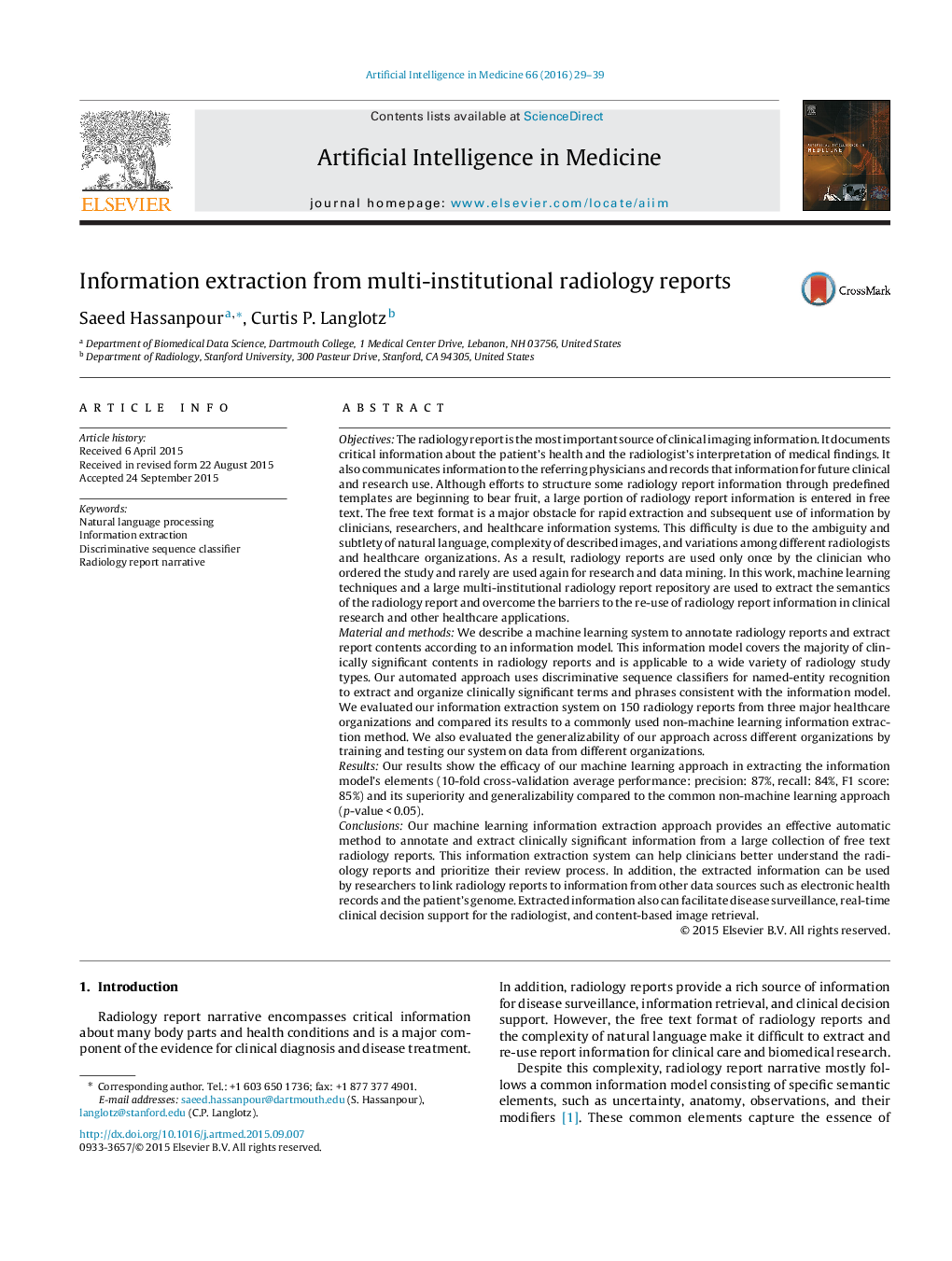| کد مقاله | کد نشریه | سال انتشار | مقاله انگلیسی | نسخه تمام متن |
|---|---|---|---|---|
| 377576 | 658796 | 2016 | 11 صفحه PDF | دانلود رایگان |
• We described an information extraction system for radiology report narrative.
• The system finds clinically significant concepts according to an information model.
• Our evaluation showed the effectiveness and generalizability of our approach.
• CMM and CRF named-entity recognition models are equally effective in our system.
• Our machine learning system outperforms the commonly used dictionary-based approach.
ObjectivesThe radiology report is the most important source of clinical imaging information. It documents critical information about the patient's health and the radiologist's interpretation of medical findings. It also communicates information to the referring physicians and records that information for future clinical and research use. Although efforts to structure some radiology report information through predefined templates are beginning to bear fruit, a large portion of radiology report information is entered in free text. The free text format is a major obstacle for rapid extraction and subsequent use of information by clinicians, researchers, and healthcare information systems. This difficulty is due to the ambiguity and subtlety of natural language, complexity of described images, and variations among different radiologists and healthcare organizations. As a result, radiology reports are used only once by the clinician who ordered the study and rarely are used again for research and data mining. In this work, machine learning techniques and a large multi-institutional radiology report repository are used to extract the semantics of the radiology report and overcome the barriers to the re-use of radiology report information in clinical research and other healthcare applications.Material and methodsWe describe a machine learning system to annotate radiology reports and extract report contents according to an information model. This information model covers the majority of clinically significant contents in radiology reports and is applicable to a wide variety of radiology study types. Our automated approach uses discriminative sequence classifiers for named-entity recognition to extract and organize clinically significant terms and phrases consistent with the information model. We evaluated our information extraction system on 150 radiology reports from three major healthcare organizations and compared its results to a commonly used non-machine learning information extraction method. We also evaluated the generalizability of our approach across different organizations by training and testing our system on data from different organizations.ResultsOur results show the efficacy of our machine learning approach in extracting the information model's elements (10-fold cross-validation average performance: precision: 87%, recall: 84%, F1 score: 85%) and its superiority and generalizability compared to the common non-machine learning approach (p-value < 0.05).ConclusionsOur machine learning information extraction approach provides an effective automatic method to annotate and extract clinically significant information from a large collection of free text radiology reports. This information extraction system can help clinicians better understand the radiology reports and prioritize their review process. In addition, the extracted information can be used by researchers to link radiology reports to information from other data sources such as electronic health records and the patient's genome. Extracted information also can facilitate disease surveillance, real-time clinical decision support for the radiologist, and content-based image retrieval.
Journal: Artificial Intelligence in Medicine - Volume 66, January 2016, Pages 29–39
